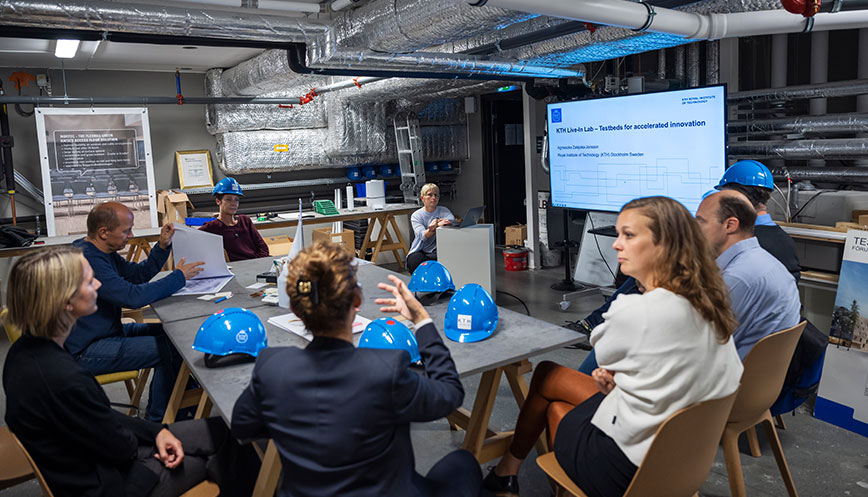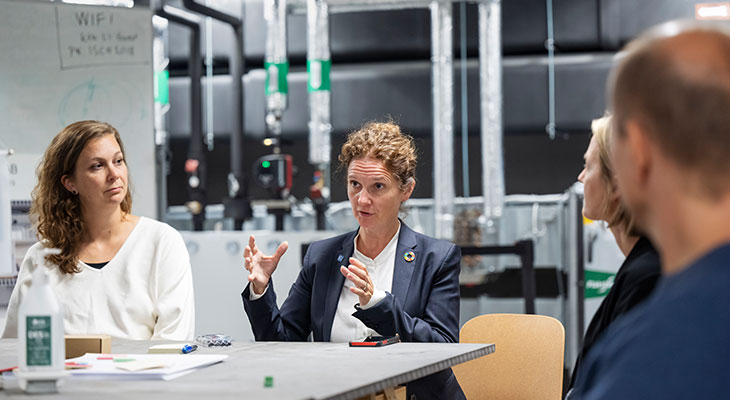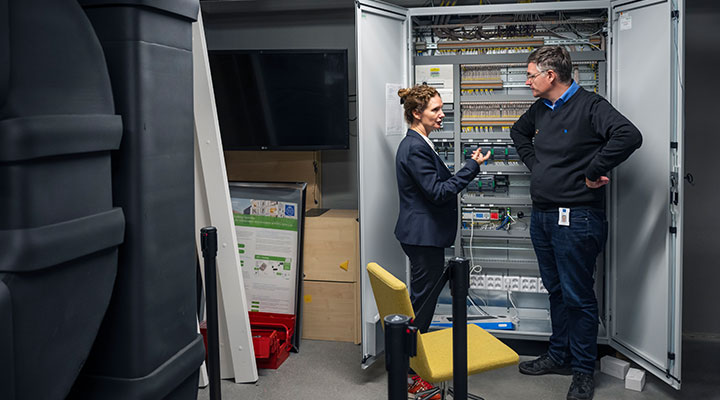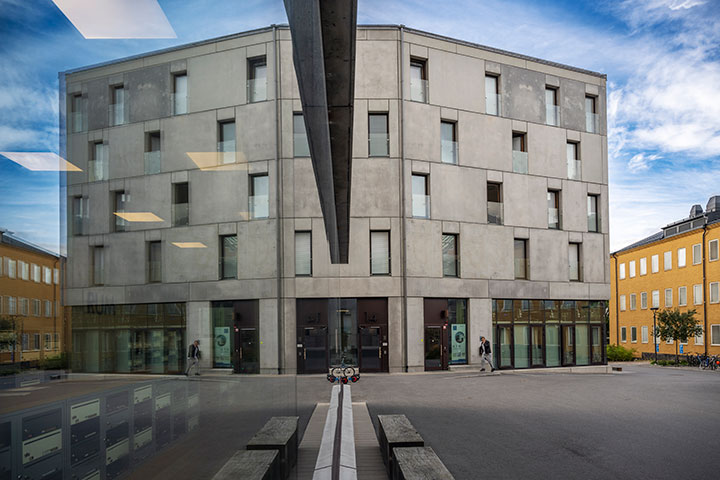Energy Platform visits KTH Live-In Lab smart building testbed

At the end of August, the Energy Platform visited the KTH Live-In Lab, which provides researchers and companies with opportunities to test new technologies for smart buildings, in particular systems designed to develop more sustainable energy systems.
The Energy Platform’s first school visit of the semester was to the KTH Live-In Lab, where new technologies are tested and developed with the aim of accelerating the development of smart, sustainable buildings.
“The KTH Live-In Lab was created to test and develop innovative solutions in buildings while they are occupied. Research conducted here provides unique insights that are closer to reality than what we can achieve in the lab,” says Agnieszka Zalejska Jonsson, Deputy Director, who welcomed the Energy Platform to the Live-In Lab and led a tour of the control room and the nerve centre of the lab.
The Energy Platform was represented by Energy Platform Director Lina Bertling, Tjernberg, Deputy Director Christophe Duwig; members of the Platform’s reference group, Kerstin Forsberg, Pernilla Hagbert and Ilya Sychugov; and Pierre Bodin, Research Advisor for Strategic Initiatives.

KTH Live-In Lab was founded in 2016 and in addition to facility partners Akademiska Hus, Einar Mattson, Schneider Electrics and Bengt Dahlgren, almost 100 other partners have participated in projects conducted at the testbed.
The physical testbed consists of three buildings on the KTH Campus: Testbed KTH which includes convertible student apartments; Testbed EM with around 305 student apartments; and Testbed AH which is a teaching building. In the past four years, the KTH Live-In Lab has carried out approximately 45 major research projects. A data pool for sharing research data and results open to KTH students, teachers, researchers and collaboration partners is also being developed.

Simplifying building management systems
KTH Live-In Lab is set to be expanded beyond the existing three buildings on campus. One example is the ongoing Semantic Tagging project, which is currently being developed in collaboration with Schneider Electric, Akademiska Hus, The Stockholm School Properties Company (SISAB), property company Einar Mattsson and KTH.
“A large number of the projects we’ve rolled out have considerable technical potential and reduce energy use. However, they tend not to be ordered by businesses as there is a lack of necessary competence to operate them,” says Jonas Anund Vogel, KTH Live-In Lab Director.
Commissioning and maintenance of building management systems is made easier with the help of a semantic database. In the case of semantic tagging, all values, sensors and equipment are given so-called in plain text “tags”, for example “ventilation fan” or “exhaust fan sensor”. This makes it possible to give instructions and control systems with commonly used phrases.
Tagging complements existing standards used in properties, opens up the possibility of creating digital twins of systems, and enables third party companies to control indoor climates using AI.
“We hope that Schneider will be able to create a kind of “app store” for the system where other companies can launch their products, for example various forms of AI applications,” says Anund Vogel.
The idea is to lower the threshold for property owners who are reluctant to install a property management system. If this opens up the platform to other companies’ products and services, it may become easier to operate.
“We need to investigate what technical obstacles exist, what the potential is and which business obstacles need to be overcome.”
The semantic database is now installed at the KTH Live-In Lab and will be tested before it is rolled out as a trial among SISAB’s 600 schools in Stockholm. The trial also means that all schools are included as part of the KTH Live-In Lab’s testbed, which could pave the way for further research.
Battery storage in multi-dwelling buildings
Another system also entered service recently which involves solar cells on the roof of the KTH Live-In Lab storing their excess electrical power in batteries provided by Northvolt. During the autumn, batteries with a capacity of 186kWh were installed, to which another 180kWh will soon be added.
“The idea is to reduce electricity use, while at the same time increasing flexibility and reducing exposure to problems in the network.”
KTH, Northvolt and Einar Mattsson are collaborating in this project to identify ways of optimising the balance between solar cells, electricity use, battery storage and electricity prices.
“Right now, there’s considerable business potential in the project and this is something we’ll investigate further,” says Anund Vogel.
Testbeds such as the KTH Live-In Lab can be found in several locations around the world. In Sweden, there is a similar testbed - HSB Living Lab - at Chalmers University of Technology.
“We’re basically a sister project, even if our approaches are somewhat different. We have also collaborated on certain projects,” says Zalejska.
Live-In Lab also has a collaboration with Vattenfallsgymnasiet college in Forsmark to spread learning and the use of the testbed to high school students.
Together with Chalmers, Lund University and Umeå University, a project was recently started to investigate new methods for healthier indoor air and minimal risk of transmission of airborne diseases such as COVID-19. Previous research has identified how extreme temperatures, with extreme cold and heat, may place entirely new demands on ventilation and climate systems.
“We would like to see more projects in ventilation, an area that tends to be overlooked. The smart air conditioning systems currently available are extremely complicated for property owners. At the same time, there are issues associated with increased energy use,” says Anund Vogel.

Text: Magnus Trogen Pahlén

